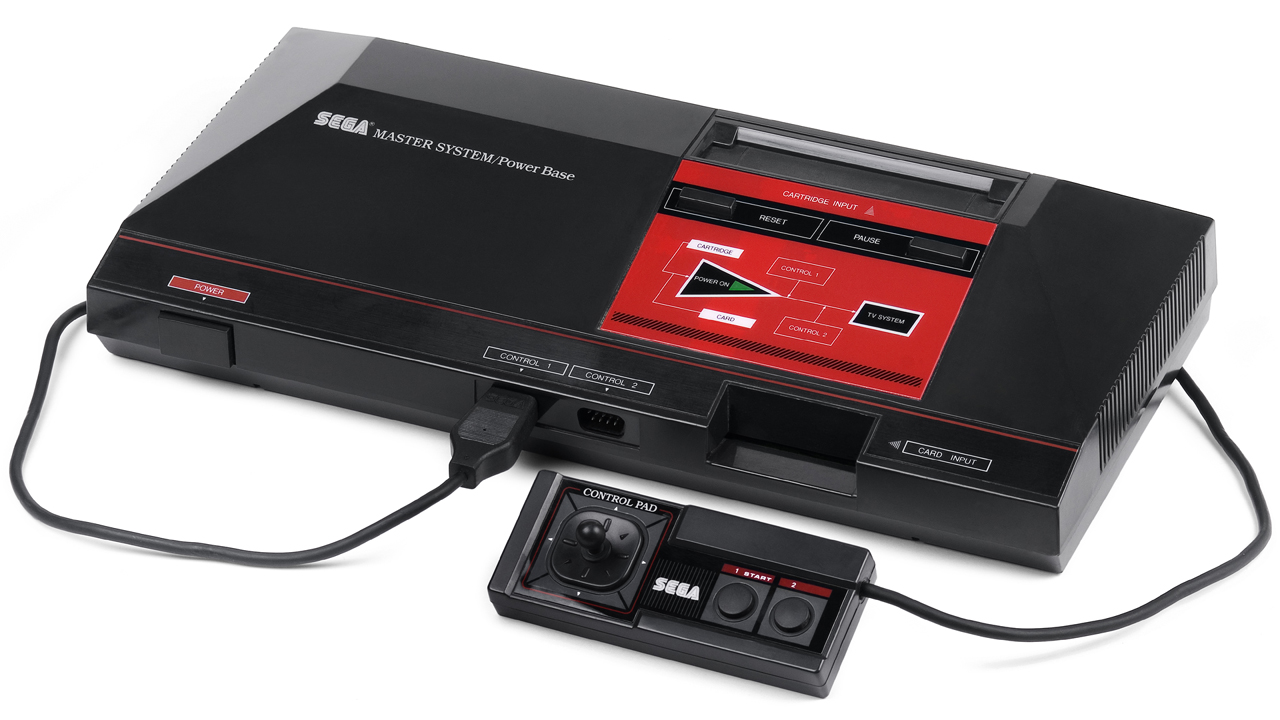Right around the same time that Nintendo released their 8-bit Famicom game console in Japan, the original version of what would eventually be released in the rest of the world as the Nintendo Entertainment System, arcade developer Sega released a competing console that they called the "SG-1000". Then, a year later, they released a redesigned version called the "SG-1000 II". Neither system was particularly successful. So after another year, Sega decided to make a few upgrades, most notably to the graphics chip, which would be based off of their System 2 arcade board. They then released this newly overhauled version which they dubbed, the "Mark III".
Unfortunately for Sega, they still couldn't stand toe to toe with Nintendo, even after multiple hardware revisions. At least, not in Japan. So Sega then decided to try their luck in the Western markets. The Mark III was rebranded as the "Sega Master System" and given futuristic-looking facelift. Once again, Sega managed to sync their release to Nintendo's, launching the Master System right around the same time that the Nintendo Entertainment System came out. Never let it be said that Sega was one to shy away from a fight.
Although the Master System was technically more powerful than Nintendo's console, with the exception of Brazil and a few European markets, it never really managed to come close to the impressive sales numbers of the NES. One major reason for this was a lack of software, primarily thanks to Nintendo's shrewd licensing requirements, that forbade third-party developers from releasing their NES titles on competing platforms. To Sega's credit, they did still manage to snag a few high-profile third-party titles, here and there, even despite this rather gargantuan obstacle. Additionally, being a (then) up-and-coming development house themselves meant that their console would at least have a stellar selection of first-party titles to choose from. So, even though Sega's hardware couldn't compete on quantity, that doesn't mean it didn't still have plenty of quality. Read on for a list of 12 of the best games that the Sega Master System had to offer.
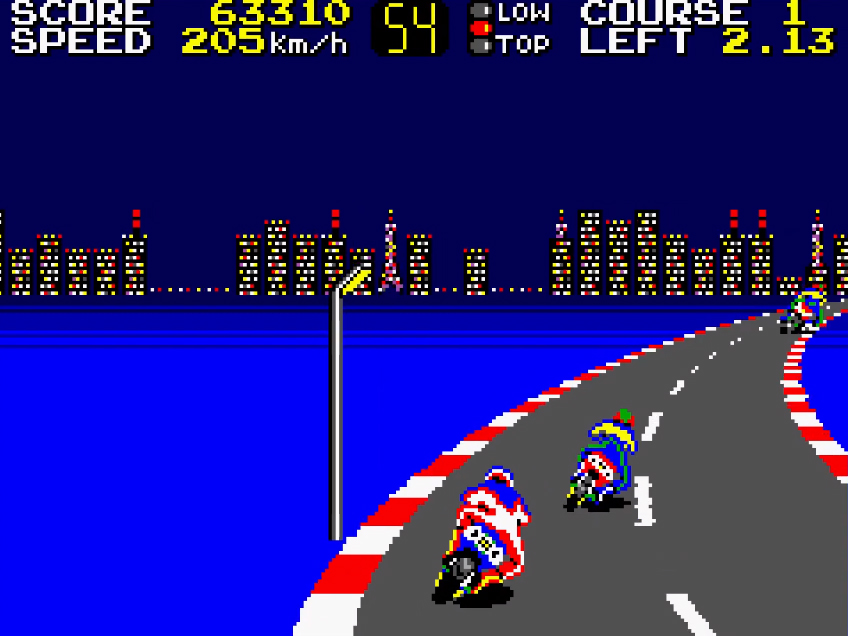
Hang-On/Safari Hunt (SEGA, 1986)
One of legendary game designer Yu Suzuki's first (of many) big hits at Sega was the motorcycle racing game, Hang-On. Inspired both by his love of bikes and Namco's Formula 1 hit, Pole Position, Suzuki set out to make the best racing game yet, but with motorcycles. Hang-On was a pretty unique title for the time, as it was the first arcade game to feature a life-size "motorcycle" as the controller. The novelty of this feature, combined with the excellent graphics and slick gameplay, made the game one of the most successful arcade titles in the world in 1985. To try to entice people to purchase their Master System over Nintendo's Entertainment System, Sega included a port of the title with the console as a two game multicart pack-in.
The other title on the multicart was a shooting game called "Safari Hunt" which, while not quite as charming as Nintendo's popular Duck Hunt game, did offer a bit more variety in terms of targets and stages. Like Nintendo's Duck Hunt console bundles, Sega also included their light gun peripheral, the Sega Light Phaser, along with the Master System console as well. While Safari Hunt would never receive any sequels, Hang-On did, with the equally popular Super Hang-On. Arriving first in the arcade, and then later on the Master System's successor console, the Sega Genesis/Mega Drive.

Choplifter (SEGA, 1986)
Although technically not a true exclusive (as the game had already appeared on several other platforms before landing on the Master System), Sega's version of Choplifter was still head and shoulders above the others, as it was an exclusive port of their completely overhauled 1985 arcade remake of the game. The arcade version being a System 2 game (on which the Master System chip was based) meant that the console port was uncommonly accurate for the period. The ability to reproduce the same vibrant colors and superior graphical details of the arcade version right in your own living room was no small potatoes back then. So, even though it was technically possible to play Choplifter(!) on other home platforms at the time, they weren't even remotely the same game as the Master System version.
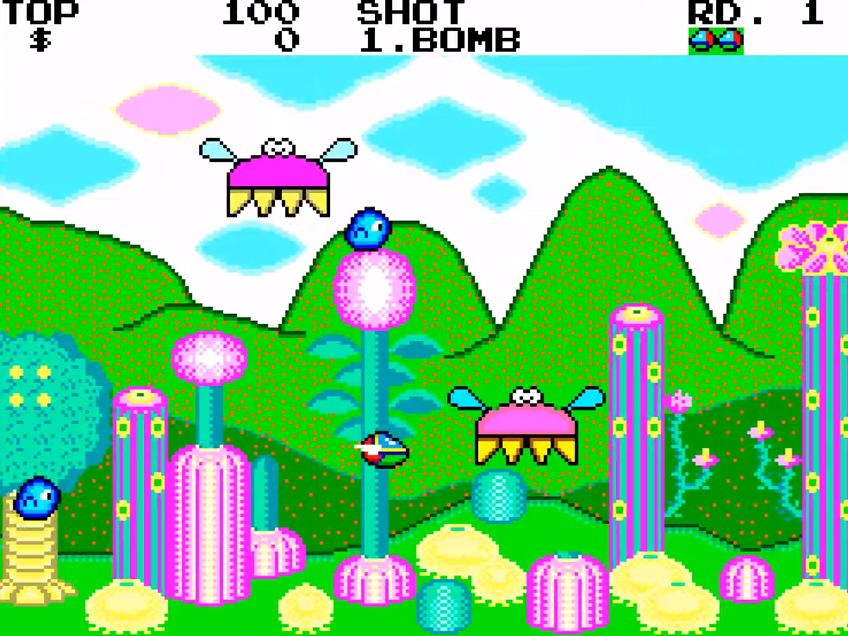
Fantasy Zone (SEGA, 1986)
Famous for being one of the earliest examples of the so-called "cute-em-up" genre, as well as the debut appearance of its main character/ship Opa-Opa, Fantasy Zone was essentially a mashup of Konami's Twin Bee (the original cute-em-up game), and the Williams 1981 arcade hit, Defender. Fantasy Zone was quite popular, both in its original arcade incarnation, and as an early Master System port. The Opa-Opa character, in particular, was so big in Japan that it was briefly became something of a mascot for Sega, as well as being featured quite prominently in the Zillion anime/video game franchise (more on that below). While Fantasy Zone would also eventually be released for NEC's TurboGrafx-16 console (and in an unlicensed format on the NES), for several years, the Sega Master System was the only home console on which their colorful, adorable arcade smash could be experienced.
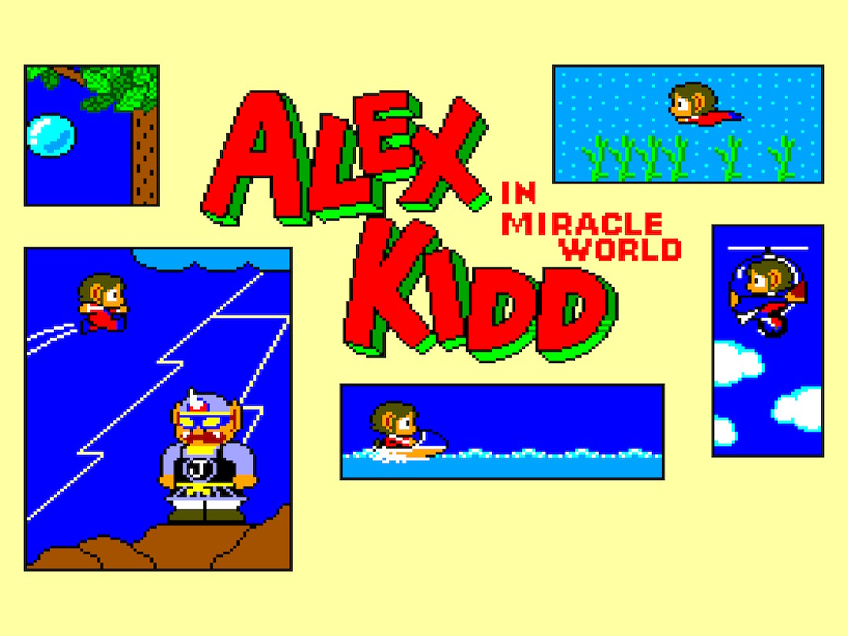
Alex Kidd in Miracle World (SEGA, 1986)
The game that would eventually become Alex Kidd in Miracle World originally started out as an adaptation of Akira Toriyama's famous Dragon Ball anime/manga series. Partway through development, however, Sega's license rights expired and they were forced to scrap it and start again. Though when you consider the titular character's iconic monkey-like appearance, as well as his ability to reduce rocks into rubble with his fist, it would seem that some of the (Son) Goku/Sun Wukong influence managed to survive.
Despite the game's unfortunate lack of any official ties to the Dragon Ball franchise, Alex Kidd in Miracle World still turned out to be one of the most colorful, polished and entertaining platformers of the generation. The game was brimming with variety, giving players the ability to run, swim, fly, ride a motorcycle and a speedboat, and was chock full of various power-ups to boot. While it may not have been able to fully rival Nintendo's groundbreaking Super Mario Bros game, it came awfully close; and it ably stood out as the Master System's closest alternative. For anyone who owned Sega's console in the mid '80s, Alex Kidd in Miracle World was not only welcome, but an arguably mandatory addition to their collection.
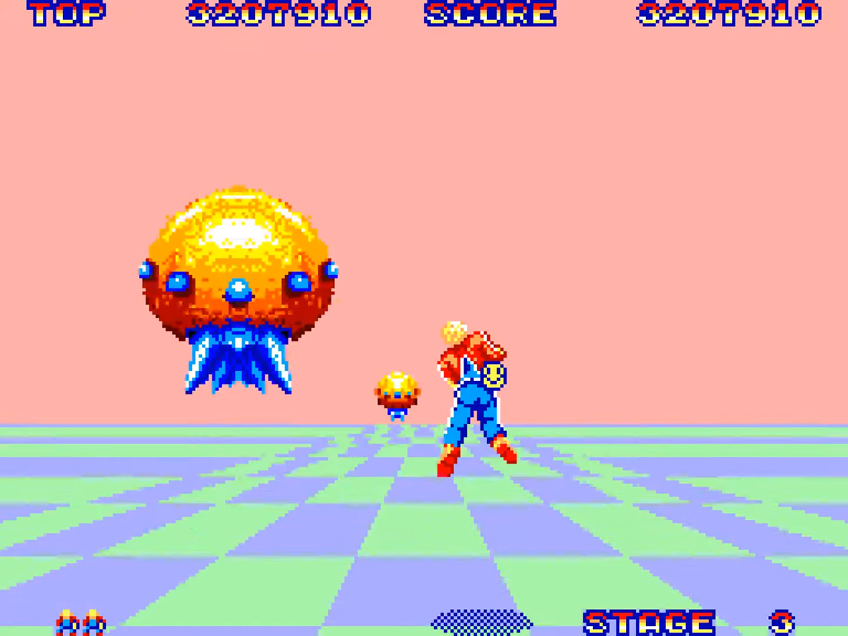
Space Harrier (SEGA, 1987)
Like Alex Kidd, the development for Space Harrier actually began as something else. In the latter's case, as an idea for a realistic-looking fighter jet game that, due to various technical limitations at the time, instead ended up evolving into a fantasy shooter where you played as the titular character, a spaceman with a jet-powered laser. Also, like Alex Kidd, despite not ending up as what was initially envisioned, Space Harrier still managed to turn into something pretty incredible. The game also had a lot in common with Sega's Fantasy Zone. Much like that title, Space Harrier was also a uniquely engaging shoot-em-up, also created around the same time, and also set on various fantastic worlds full of vibrant colors. Although Fantasy Zone was a 2D shoot-em-up, whereas Space Harrier was 3D, and didn't go all the way in on the cuteness factor. But perhaps where it was most importantly like Fantasy Zone, was that Space Harrier was another popular title for Sega, first in the arcades and then, for a period, exclusively on the Master System.
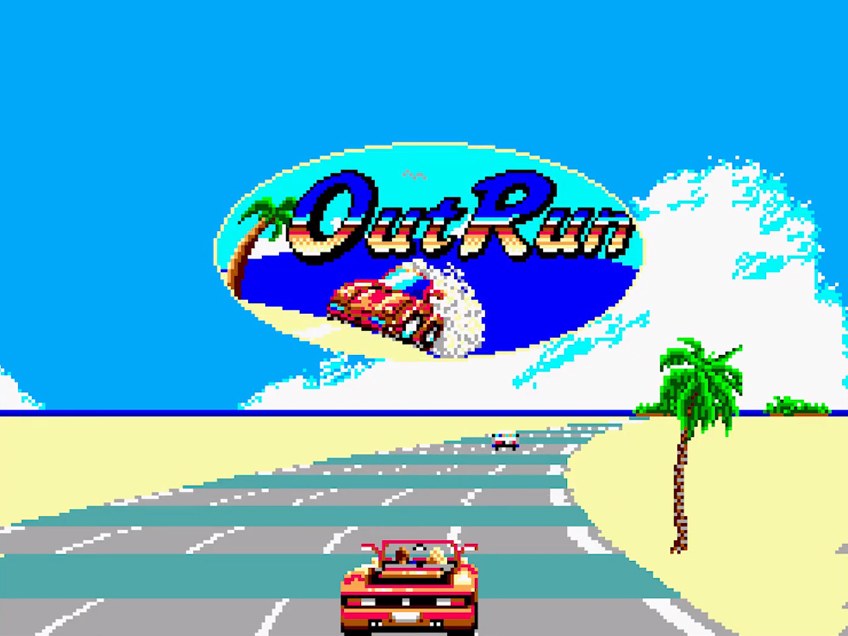
Out Run (SEGA, 1987)
Following the success of his motorcycle racer, Hang-On, Sega's Yu Suzuki decided to then try his hand at making his own version of a traditional car racing game. Inspired by the hit 1981 movie, The Cannonball Run, Suzuki set about making the game that would become Out Run, originally intending it to be about racing across America. The game would set itself apart by featuring stages based on various cities, regions, etc, along with different routes, via branching paths, that the player could choose from. While the novel gameplay features were retained for the final version, Suzuki was advised by Sega to change the setting from America to Europe instead (though fans would eventually receive a USA-centric follow-up many years later, with the release of 2004's Out Run 2 SP).
While touring Europe, gathering ideas to base the stages on, Suzuki was inspired to select the Ferrari Testarossa as the player's car in the game. To make it as authentic as possible, the development team used an actual Testarossa as a reference for how the car in the game should look and sound. Finally, Suzuki came up with the idea to have wider than normal roads in the game, as well as selectable music tracks for added enjoyment and variety. As with Hang-On, Out Run became another worldwide arcade smash for Sega, and a Master System port was produced in short order. This home version also garnered critical acclaim and was quite impressive for the time, despite not being able to fully capture all the finer details of the arcade original. A more faithful conversion would follow a few years later for Sega's 16-bit Genesis/Mega Drive console. No version would come to a Nintendo console, however, for over two decades.
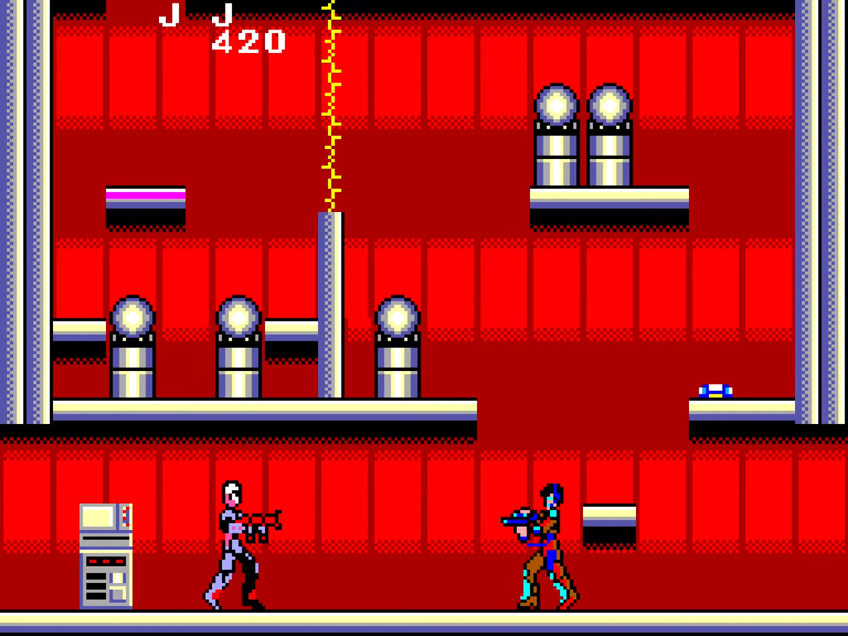
Zillion (SEGA, 1987)
Zillion was a pretty fantastic anime/video game franchise that first debuted in Japan in 1987. What made the franchise unique was that it was actually a cooperative effort between Sega and Tatsunoko Productions, the studio that produced it. The anime featured the actual Mark III/Master System's Light Phaser gun peripheral (cord and all) as the design for its titular Zillion weapons. Additionally, Opa-Opa, the popular anthropomorphic ship character from Sega's Fantasy Zone game, made numerous recurring appearances as a minor character throughout the anime's run.
In return, Sega released two video games adaptations of the series for their home console. The first of these, was the decidedly superior entry. This 1987 action-platformer, simply titled "Zillion", bore something of a resemblance to Nintendo's earlier NES hit, Metroid. As main character JJ, the player was tasked with exploring and destroying the evil underground Nohza/Norsa base on Planet X and occasionally returning to your ship on the surface. Zillion was something of a cult hit for the Master System and, though it didn't garner the same kind of acclaim and popularity as Metroid, was easily the best comparable experience to be found on Sega's console. But, whereas Metroid was only inspired by Ridley Scott's Alien movie, it was never able to boast having a movie or animated series of it's very own. Especially not one as outstanding as Zillion(s).
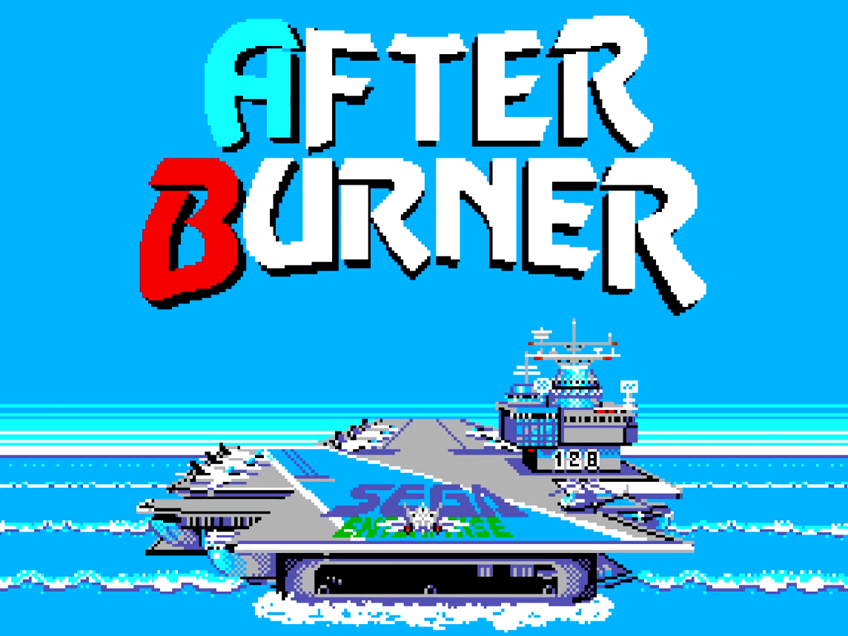
After Burner (SEGA, 1988)
When Sega's Yu Suzuki first set out to make a quasi-realistic fighter jet game, he soon realized that the then-current hardware he was working with wouldn't quite be up to snuff. While that project would eventually morph into the stellar fantasy shooter, Space Harrier, Suzuki never gave up on his original vision. After the famous fighter jet movie, Top Gun took the world by storm, he decided to give it another shot. With the use of the company's newer, more advanced Sega X arcade board, Suzuki was at last able to achieve his goal. After Burner was born.
Thanks to its cutting edge graphics and uniquely thrilling gameplay, as well as the popularity of the aforementioned film, After Burner was an overwhelming success in the arcades. Unsurprisingly, a Master System port was released shortly thereafter, and went on to become a best-seller for Sega. Even though Nintendo's Entertainment System had actually received an exclusive video game adaptation of the Top Gun movie (compliments of Japanese developer, Konami), that game's notorious difficulty and somewhat mundane (by comparison) gameplay meant that, where fighter jet games were concerned, Sega's Master System was the real top gun.
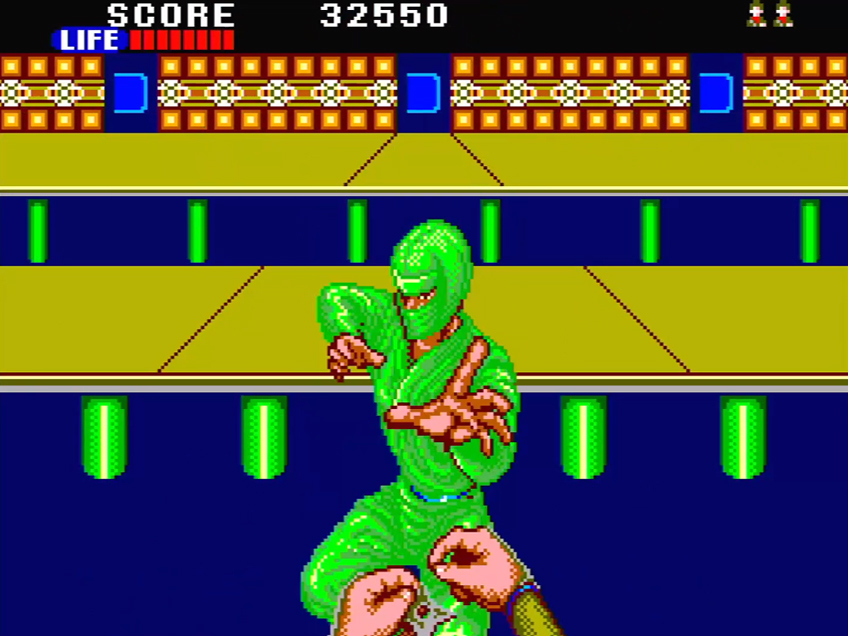
Shinobi (SEGA, 1988)
Sega's Shinobi, something of a clone of Namco's earlier hit arcade game, Rolling Thunder, was itself released to the arcades in 1987. Like Namco's game, Shinobi was also a side-scrolling action-platformer with two levels the player could jump back and forth between in order to take out and/or avoid enemies. Both games also featured crates which the player could use to avoid incoming fire. Both games were also quite popular, each becoming one of the most successful arcade titles of the year, following their respective releases.
But the games weren't completely identical. Instead of a secret agent, like in Rolling Thunder, Shinobi featured a ninja as the playable character and allowed the player to use a screen-clearing ninjutsu technique, once per stage. Shinobi also featured a pretty unique bonus stage where the player was required to throw shurikens at incoming enemy ninjas from a first-person perspective. Of the two games, Shinobi was the more popular, and while Rolling Thunder may have inspired Shinobi, Sega's game in turn inspired a great number (if not all) of the ninja-themed releases that quickly followed. These included (but were not limited to) Irem's excellent arcade/TurboGrafx-16 title, Ninja Spirit, and Tecmo's equally influential Ninja Gaiden for the NES. The Master System would be the only home console to receive an official port of Sega's arcade hit, however.

Phantasy Star (SEGA, 1988)
One of the earliest console RPGs to ever be released, Sega's Phantasy Star came out just a year and a half after Enix's Dragon Quest/Warrior in Japan, and a mere two days after Square's Final Fantasy, but preceded both of those titles by several months in the West. After the success of Dragon Quest (and the release of its sequel), Sega decided it was time to make an RPG of their own. They assembled an internal team, including some of the key staff members who created Alex Kidd in Miracle World, as well as future lead Sonic the Hedgehog programmer, Yuji Naka.
In order to set the game apart from other RPGs of the day, the newly formed development team took inspiration from the astronomically popular Star Wars movies and decided to have the game offer a combination of medieval fantasy and science fiction, hence the name, Phantasy Star. In addition to lots of color and 3-dimensional dungeons (which Nintendo's console wasn't able to produce), the team also opted to feature a female protagonist in the game, something that was fairly uncommon at the the time. The game was a critical hit, receiving heaps of praise upon release, particularly for its (at the time) exceptional graphics. As a unique, technically impressive and groundbreaking early console RPG, Phantasy Star is widely regarded as one of the more important titles of its day, as well as one of the best games to ever grace the Sega Master System.
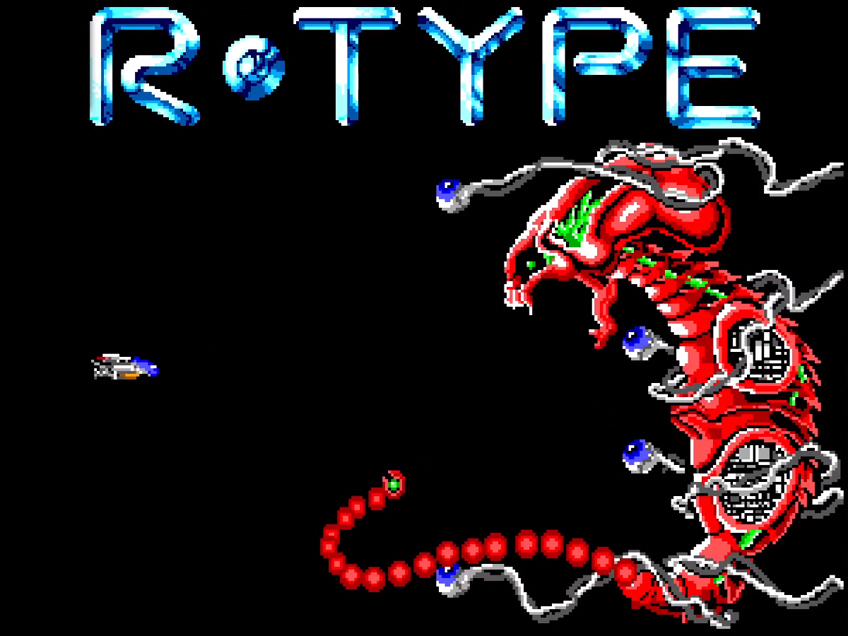
R-Type (SEGA, 1988)
R-Type holds the distinction of being arguably the best third-party title for the Master System, as well as the only one to appear on this list (though it was still published by Sega). The game was a shoot-em-up title first released for the arcades by Japanese developer, Irem in 1987. Inspired both by Konami's influential side-scrolling shooter, Gradius, as well as the often-imitated (particularly in the gaming world) Alien movies, Irem created nothing short of a shoot-em-up masterpiece.
The game was so good in fact, that many to this day still consider it to be one of the best, most important shoot-em-up games ever made. Despite Nintendo publishing the arcade version in North America, it was not them, but Sega, who managed to secure the first home console port, just a year later. While NEC's TurboGrafx-16 system would also get a port about a year after that, for a dozen or so months, the Sega Master System was the only home console on which anybody would be able to experience the brilliance of R-Type for themselves.

Wonder Boy III: The Dragon's Trap (SEGA, 1989)
As implied by the title, Wonder Boy III: The Dragon's Trap was the console exclusive third installment (not counting the then arcade-exclusive third installment, Wonder Boy III: Monster Lair) to the popular series. The game continued the adventures of the transformed titular character as he sought to break the dragon's curse and turn himself human again. As one of the last exclusives to be released for Sega's 8-bit console before turning the vast majority of their attention to their 16-bit Genesis, The Dragon's Trap was something of a swan song for the aging Master System. The game was also met with considerable praise and has since been described as one of the best games, not only for the Wonder Boy franchise, but of the Master System itself, and indeed, even of the entire 8-bit generation. Not too bad a note to end a console's run on.
Despite Sega's inability to go toe-to-toe with Nintendo during the 8-bit era, their Master System console wasn't a total bust. Sega did have some success in certain regions of the world. They also managed to put together a very solid library of games for the system, most of which, they themselves had to create. Many of these titles would go on to earn cult followings and even a good bit of praise from the review publications, which helped to raise brand awareness for Sega. The Master System also succeeded by giving Sega valuable market experience. Experience that would pay off in spades with their 16-bit follow-up console, the Sega Genesis/Mega Drive.
The Genesis would ultimately fare much better in the console wars than the Master System had. It would also boast a massive library of hit games, both from numerous third-party developers, and from Sega's own internal studios. While these studios would continue to come up with many amazing new game franchises during the Genesis era, there would also be plenty of excellent sequels as well. Fantastic follow-ups to the one-of-a-kind originals that either first hit the home market, or were first established on the Sega Master System.
(This is a repost of an article that originally appeared on 12/12 Games.)
[Images: SEGA]

